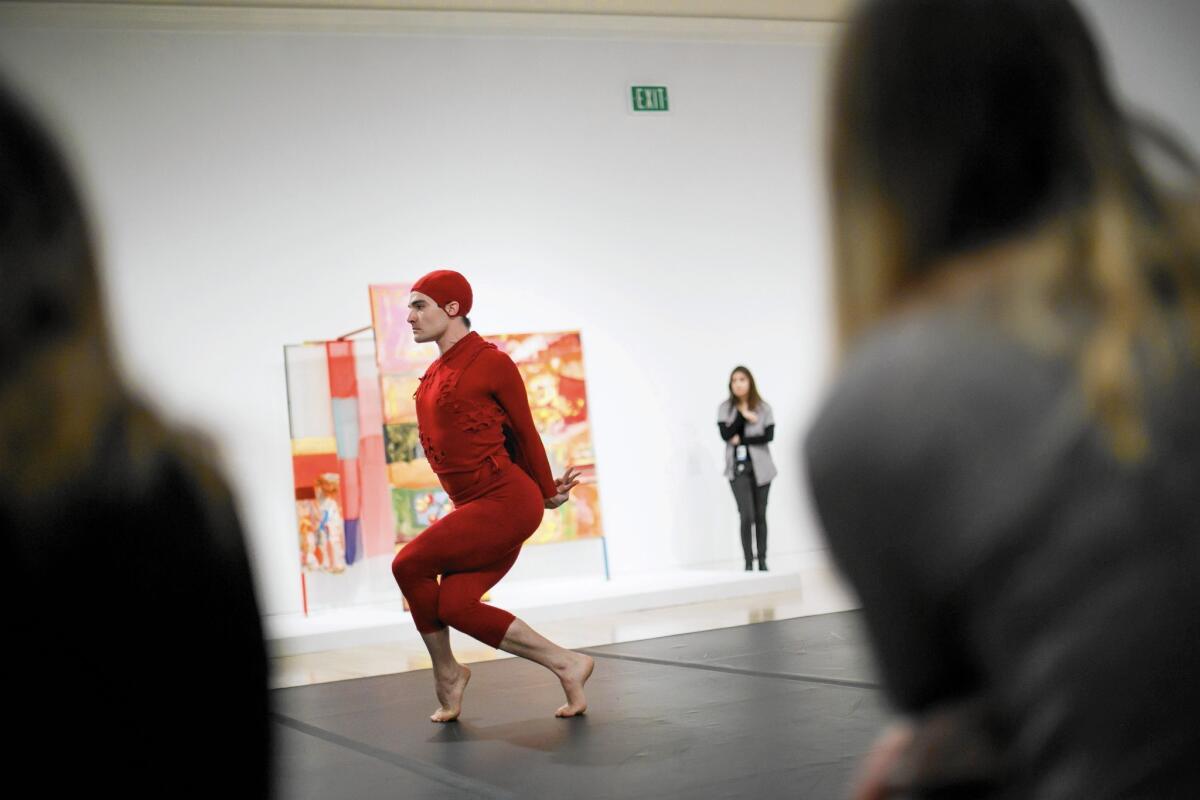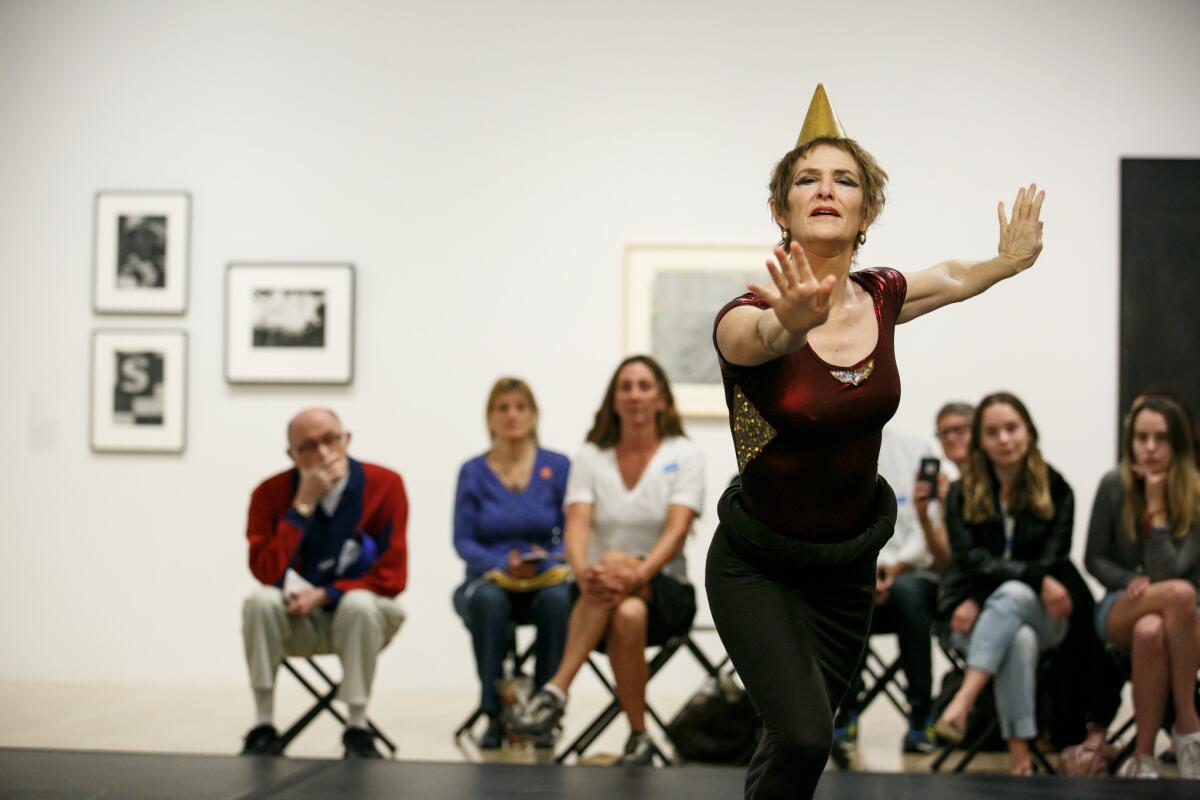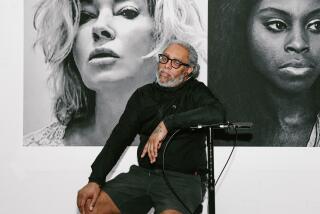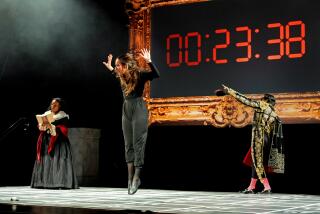How John Cage made performance the true heart of Black Mountain College
A month after the New York Times had listed John Cage (along with Leonard Bernstein) as one of the six most promising young American composers, and just as Cage was starting to become an avant-garde celebrity in New York, he used his exceptional powers of persuasion to borrow a car from Sonia Sekula. The edgy Swiss Abstract Expressionist painter and the 35-year-old Cage happened to be neighbors in a Lower East Side tenement building that the composer had encouraged starving young artists to inhabit.
Cage thought it high time that he and dancer-choreographer Merce Cunningham drove across country to see how the West Coast, where they were both from, reacted to their radical ideas about music and dance. In April 1948, the pair set out for California in Sekula’s jalopy.
The trip began with a five-day stopover at Black Mountain College in North Carolina. That visit doesn’t merit more than an aside in the catalog of the Hammer Museum’s exhibition “Leap Before You Look: Black Mountain College 1933-1957.” There is a lot of important territory to cover in the 24-year history of the uniquely influential liberal arts college where noted artists and thinkers held forth. Nor is there much in the way of decent documentation of the visit.
Cage had finished Sonatas and Interludes for prepared piano, his most ambitious work up to this time and one for which he would finally be taken seriously as a composer and not be seen merely as the beguilingly inventive mastermind of musical novelties. A main motivation for heading west was an invitation to play Sonatas and Interludes at the Monday Evening Concerts series in Los Angeles.
But it was at Black Mountain where Cage gave the first public performance, if you want to call it that. This was Sonatas and Interludes at a makeshift concert in the Blue Ridge Mountains, on a makeshift stage with a modest piano and before an audience of the tiny college’s student body and faculty. (If everyone showed up, at best 100 were on hand.)
The school couldn’t afford to pay Cage and Cunningham — they taught as well as performed — but the morning they left, they found Sekula’s car overflowing with artwork and food, the students’ and faculty’s expression of gratitude. Cage and Cunningham got something else, as well: an invitation to return and teach that summer.
They did, and thanks to Cage, neither Black Mountain nor American art would ever be the same.
By its nature, an art exhibition cannot fully convey what that meant or how Cage did it. “Leap” does not look away from the importance of music, dance, theater and literature at Black Mountain, and beginning Tuesday, the Hammer will make an eight-day leap into Black Mountain performance through concerts and lectures and dance performances.
FULL COVERAGE: Spring 2016 arts preview | Exhibits | Theater | Dance | Pop music | Books
Although visual art must understandably be a museum’s core concern, there is validity to curator Helen Molesworth treating it as central to Black Mountain. Founded in 1933, the school was modeled after the Bauhaus in Germany, and the émigré German Bauhaus painter, pedagogue and color theorist Josef Albers guided Black Mountain through some of its early years.
Albers and his wife, textile artist Anni Albers, are as central to the exhibition as they were to the school. Because of the couple’s great curiosity, they avidly explored a range of attitudes and cultures, which were shared throughout a school where students and faculty lived, ate, worked and socialized in an environment of inescapable conversation and inevitable argument. Molesworth captures this chattering zeitgeist by displaying carefully chosen artworks in such a way that they talk to one another.
What was all that chattering about? Attitudes toward music, Molesworth notes in the catalog, were one way to distinguish artistic differences at Black Mountain. Music, according to a Black Mountain brochure, represented “a world of inner order [that] can help toward developing that community for which we all toil.” The noted Viennese violinist Rudolf Kolisch, invited in summer 1944 to take part in Black Mountain’s celebration of Arnold Schoenberg’s 70th birthday, taught a course called Democratic Principals of Ensemble Playing.
But it was Cage who advocated true democracy, which meant throwing a monkey wrench into such high-minded musical conceit, and Cunningham was the monkey.
Cage had become fascinated by Erik Satie, the then-obscure, feisty French composer who wittily defied the German deification of structural logic. In summer 1948, in response to the Schoenberg Festival four years earlier, Cage produced a Satie Festival that included a lecture defending Satie. He used the very ideals that Black Mountain professed to “oblige” German refugees to listen to his half-hour presentations of Satie’s piano music for 25 consecutive evenings.
Creating an uproar
Cage’s attitude was that Beethoven had been in error because he created music defined by harmony. Cage proposed following Satie’s example of music defined on time lengths.
This defense was essentially personal. Cage always liked to say he had no gift for harmony, and here he hit home. Albers’ pedagogic philosophy was that art didn’t require talent as much as it did understanding and technique. But Cage, one of the most gifted musicians of all time, never felt comfortable with the harmony on which Western music was said to depend.
The defense of Satie created the expected uproar and led to a famous food fight among distinguished artists, the Beethoven camp armed with sausages, Satie-ists with crepes.
The climax of the festival was the staging of “The Ruse of Medusa,” Satie’s surreal farce with piano interludes called monkey dances, which featured, of course, Cunningham.
Buckminster Fuller, who attempted to build his first geodesic dome at Black Mountain that summer (he failed but succeeded the following summer), portrayed the nonsensical baron. A theater student, Arthur Penn (the future filmmaker), directed. Décor was by Willem and Elaine de Kooning, then young artists Cage had brought along to Black Mountain. A small acting role was assigned to student sculptor Ruth Asawa, whose works are among the highlights of “Leap.”
The levity of “Medusa” lightened the atmosphere but in no way lessened Cage’s challenges to the Black Mountain belief system. His target was not harmony but memory, the idea that for music to be followed you must be able to remember what came before. But what is necessary for Beethoven and Schoenberg is not for Satie. Cage wanted a contemporary art that reflects life as it was led. To the Black Mountain traditional modernists, and especially for the émigrés, memory must always be honored, one must never forget.
Rather than disremember, Cage simply called for action. He used performance to bring together a community of artists through their work without the compromise of collaboration. Essentially, Cage made “Medusa” an extension of breakfast. He and Cunningham began each morning at Black Mountain with Fuller, discussing ideas and telling stories about themselves. For Cage, memory wasn’t a required prescription for consuming art but a deeper one for making it, bringing the experiences of many into the moment.

Four years later, in 1952, Cage returned to Black Mountain, and this time he staged what has become the most celebrated of all the college’s activities. It wasn’t called anything, just announced as a concert. There were entertainments of all sorts given almost daily, most often evening dances, excellent for letting off steam and fostering romances.
It was a strange summer for Cage. He was working on “Williams Mix,” what came to be the first American piece of electronic music made by splicing recording tape. This had a Black Mountain association, having been commissioned by Paul and Vera Williams, who met and married as students there. Cage had intended to employ his students to help him with the laborious business of splicing tape. But the kids were too clever to be lured into that, and no one signed up for the class.
Instead, Cage hung out with them at meals, the dining hall being the principal place on campus for discussion. One morning the topic was French dramatist Antonin Artaud’s ideas about theater reflecting the immediacy of experience, and Cage suggested making an illustrative theater piece to be performed that day using the resources of Black Mountain.
He asked artists to do their thing somewhat simultaneously. He quickly sketched out a layout with the audience surrounding the performers and created the timing for the participants. They were not told what to do, just where and when.
The poet Charles Olson read, probably on a ladder. Cage delivered a lecture he had written earlier for Juilliard. Cunningham improvised a dance. Avant-garde virtuoso David Tudor played something or other on the piano. Robert Rauschenberg, who had been a student of Albers, hung his white paintings and maybe a black one. There were projections of film and a painting by Franz Kline overhead.
This is widely credited as having been the first Happening and the inciter of performance art. Retrospectively it has been given the title “Theater Piece No. 1,” although it is not an official part of the Cage catalog. Though a pack rat, Cage considered it such a classroom-casual event that he never even bothered to keep the “score.” No one bothered to take a photograph.
And no one is sure exactly what happened at the first Happening. Witness accounts vary. An enormous literature has sprung about theorizing why that could be, what it all means and how we deal with a fleeting historic event we can’t pin down. But Cage’s revolutionary intention (or non-intention) was to defeat memory.
The participants couldn’t remember because they were too focused on their own work. There had been no rehearsal, other than Cunningham testing the space so that he wouldn’t accidentally kick someone. Not all artists are afforded the luxury of leaping before they look.
The lack of structure, moreover, meant it was impossible to take everything in. The theater piece lives on because it became personal and thus meaningful to each person who was there, and that is its genius.

Polly Motley performs “Glyph,” choreographed by dancer and teacher Katherine Litz at Black Mountain College in 1951, to Lou Harrison’s score “The Glyph,” at the Hammer Museum on March 18, 2016.
Lasting influence
It was at Black Mountain that Rauschenberg’s white paintings gave Cage the courage, he later claimed, to write his seminal “silent” piece “4’33,” “ which Tudor premiered in Woodstock, N.Y., two weeks after the Black Mountain “Theater Piece No. 1.”
It was at Black Mountain that Cunningham founded his dance company, which, for the next half century, redefined modern dance and played a pretty important role in music as well.
It was the mix of arts and styles at Black Mountain that inspired Lou Harrison in the early 1950s to explore Baroque period tuning and Japanese court music while finishing his 12-tone opera, “Rapunzel.”
Now we are left with the resonance of all this. Look and listen, they are all around you. Next month we will be well reminded of Satie’s importance, first suggested by Cage, with the international celebrations of the 150th anniversary of the composer’s birth, just as the recent death of Patty Duke has reminded us that Penn directed her Oscar-winning performance in “The Miracle Worker.”
Tudor has been taken up by a new generation: Last week the young Southland Ensemble mounted the pianist and composer’s electronic installation “Rainforest IV” in Pasadena. The Los Angeles Philharmonic will stage Harrison’s “Young Caesar” next season.
The collage-like electronic soundscape of Cage’s “Williams Mix” led to the Beatles’ “Revolution 9.” Am I the only one who suspects a distant electronic strand of “Williams Mix” DNA found its way into Kendrick Lamar’s “To Pimp a Butterfly”?
Cage once told me that in stirring up so much so quickly, he likened his role at Black Mountain to that of a hit-and-run driver. We don’t know what hit us, only that we are unhurt and happier to be alive.
More to Read
The biggest entertainment stories
Get our big stories about Hollywood, film, television, music, arts, culture and more right in your inbox as soon as they publish.
You may occasionally receive promotional content from the Los Angeles Times.







